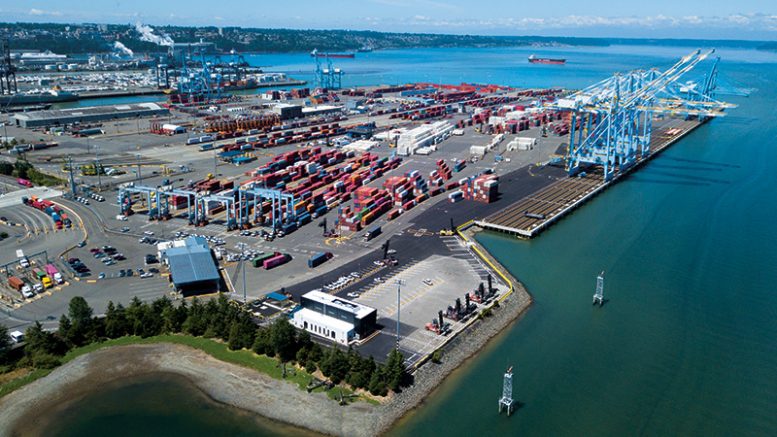By John Tullis, Business Development Manager, The Northwest Seaport Alliance
Once a potato is harvested, where does it go?
If its destination lies overseas, it will almost certainly pass through one of the 10 container terminals of The Northwest Seaport Alliance (NWSA). And from there, most travel to Asia. Nearly a third go to Japan, but South Korea, China, Taiwan, the Philippines, Malaysia, Hong Kong and Singapore are also hungry for the potatoes exported through the NWSA.
From French fries to chipper potatoes to fresh, whole potatoes, roughly three-quarters of the nation’s potato exports pass through NWSA terminals. And demand is growing; consumers in Central and South America want more potatoes, and the NWSA is looking at how best to meet that demand through our terminals.
Competitive Position
The Northwest Seaport Alliance is a partnership between the Ports of Seattle and Tacoma to move marine cargo both into and out of the U.S. The partnership formed in 2015 as a response to changes across the maritime sector where fierce competition has driven prices downward.
In recent years, ocean carriers began to invest in larger ships because they cost less to operate, using less fuel per unit and benefiting from other economies of scale. But with larger ships came excess capacity, and many ocean carriers have since had to consolidate. These volatile market conditions brought a critical choice for the Ports of Seattle and Tacoma: continue to compete against each other and watch their revenues tank or join forces and invest in terminal modernizations to handle the larger ships.
Fast forward to today. As the NWSA approaches its fourth anniversary this summer, the final investments are underway to upgrade Husky Terminal in Tacoma to accommodate not one, but two super-post-Panamax ships end-to-end. And construction is set to kick off on similar upgrades to Terminal 5 in Seattle as soon as this summer. With the capacity to handle large volumes effectively, we are anchoring our ability to continue connecting exporters across the Northwest with markets overseas, particularly in Asia.
To learn more about The Northwest Seaport Alliance, visit www.nw.sa.com.

John Tullis, business development manager at The Northwest Seaport Alliance, shared an update from the port and shipping industry at the Washington-Oregon Potato Conference. “We value the opportunity to participate in the potato conference as potato products are an important, high-volume commodity in our gateway. It’s a great opportunity to connect with both growers and shippers and provide them with an update on the improvements we’re making at the port,” Tullis said.
Did You Know?
Cargo volume is measured in 20-foot equivalent units (TEUs). Most trucks out on our highways are hauling 40-foot containers, two TEUs. In 2017, the NWSA exported 67,317 TEUs of frozen potatoes, 13,200 TEUs of fresh potatoes and 13,869 TEUs of other potato types, such as flakes or starch products. To provide a sense of scale, an estimated 40,000 whole potatoes could fit in one 40-foot container.


